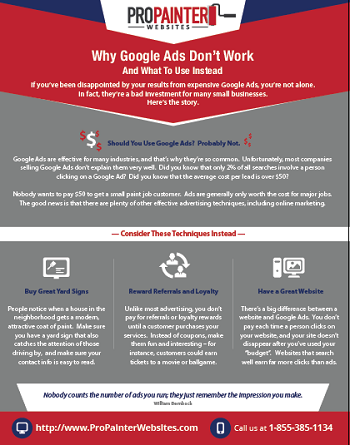How Do The Appropriate Shades Influence Your Brand Name'S Appeal In Business Exterior Paint? Discover The Crucial Elements That Lead Your Choices
How Do The Appropriate Shades Influence Your Brand Name'S Appeal In Business Exterior Paint? Discover The Crucial Elements That Lead Your Choices
Blog Article
Content Develop By-Joyce Ismail
When it comes to business external paint ing, the colors you select can make or break your brand name's appeal. Understanding exactly how different colors affect understanding is key to bring in consumers and developing depend on. But it's not nearly individual preference; regional patterns and guidelines play a considerable duty as well. So, exactly how do you locate the ideal equilibrium between your vision and what reverberates with the area? Let's discover the crucial aspects that guide your shade options.
Recognizing Shade Psychology and Its Effect On Organization
When you choose shades for your business's outside, recognizing shade psychology can considerably influence exactly how possible consumers regard your brand.
Shades stimulate feelings and established the tone for your organization. For instance, blue often communicates count on and professionalism and reliability, making it suitable for banks. Red can produce a sense of necessity, ideal for restaurants and inventory-clearance sale.
Meanwhile, green symbolizes development and sustainability, interesting eco-conscious consumers. Yellow grabs interest and sparks positive outlook, yet too much can bewilder.
Consider your target audience and the message you wish to send. By selecting the best colors, you not only enhance your visual charm yet likewise align your image with your brand name values, eventually driving consumer interaction and loyalty.
Studying Citizen Trends and Laws
Exactly how can you guarantee your external painting choices resonate with the neighborhood? Begin by researching neighborhood patterns. Check out neighboring businesses and observe their color pattern.
Take note of what's popular and what feels out of place. This'll help you align your choices with community aesthetic appeals.
Next, examine local regulations. Many towns have guidelines on outside shades, especially in historic districts. You do not intend to hang around and cash on a combination that isn't certified.
Involve with neighborhood local business owner or neighborhood groups to gather insights. They can offer beneficial responses on what colors are favored.
Tips for Balancing With the Surrounding Atmosphere
To develop a natural look that blends seamlessly with your environments, think about the natural surroundings and building designs nearby. Beginning by observing the colors of nearby buildings and landscapes. Natural tones like greens, browns, and soft grays typically function well in natural setups.
If your residential property is near vibrant metropolitan locations, you may select bolder tones that reflect the regional energy.
Next off, consider the building style of your structure. industrial building painting might take advantage of traditional colors, while contemporary styles can welcome contemporary combinations.
Examine your shade choices with examples on the wall surface to see how they engage with the light and atmosphere.
Lastly, keep in mind any local guidelines or community appearances to guarantee your choice improves, rather than clashes with, the environments.
Final thought
To conclude, choosing the ideal colors for your industrial exterior isn't just about looks; it's a tactical decision that influences your brand's perception. By taking advantage of shade psychology, thinking about neighborhood trends, and ensuring consistency with your environments, you'll create a welcoming atmosphere that attracts customers. Do not forget to evaluate examples prior to committing! With the appropriate approach, you can raise your company's aesthetic charm and foster long-term client involvement and loyalty.
